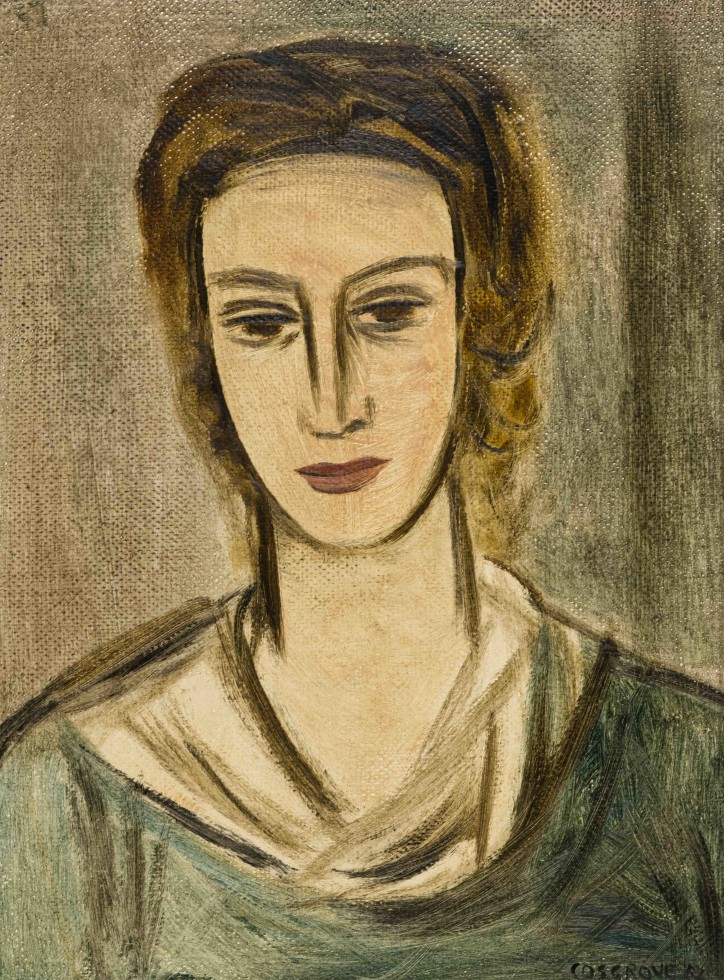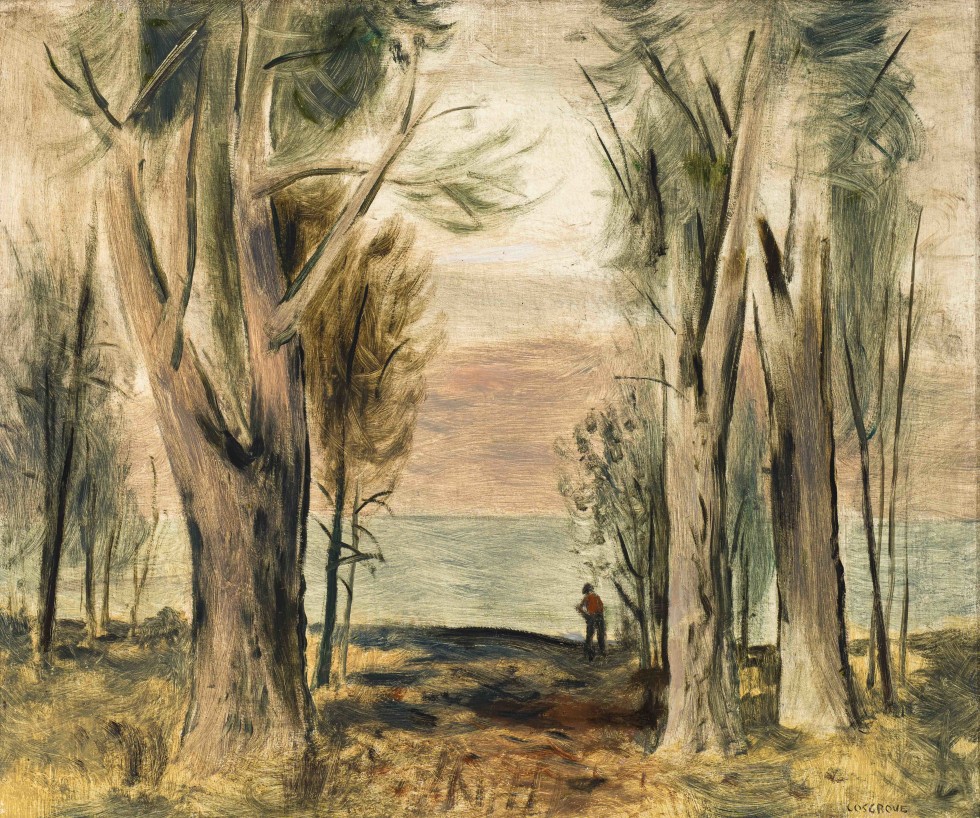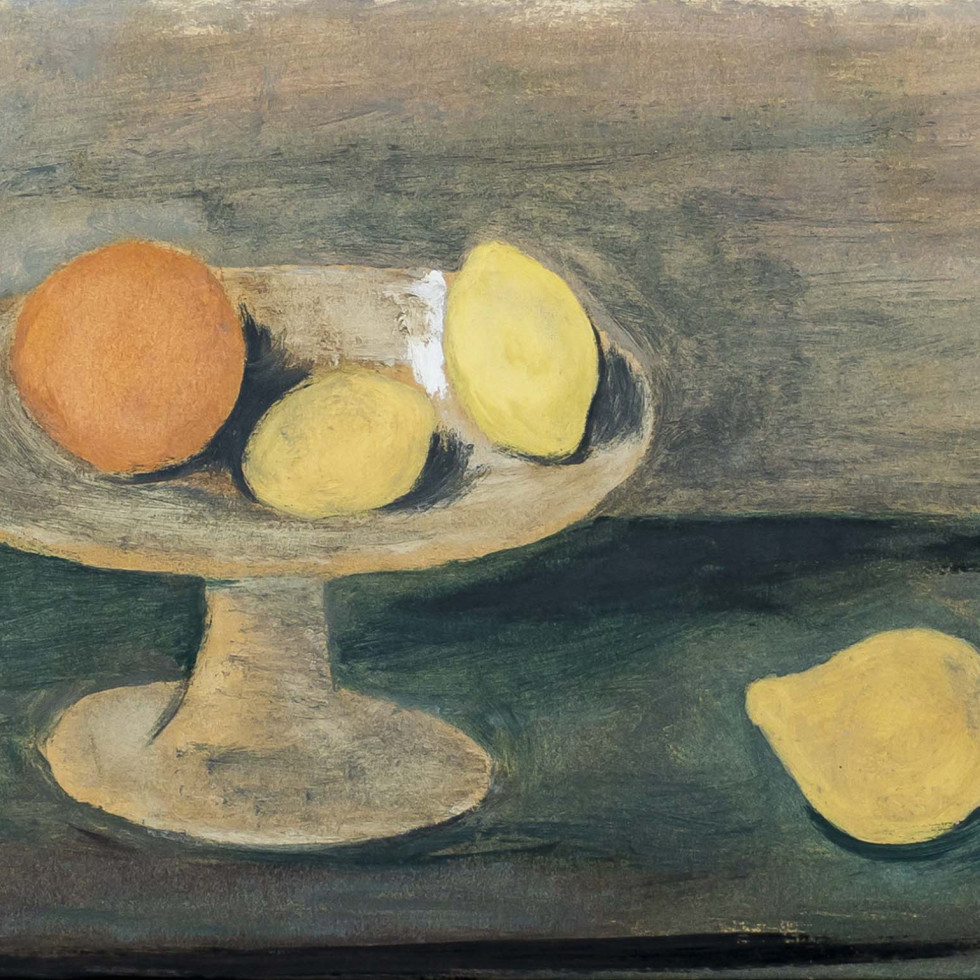Stanley Cosgrove paintings, biography, exhibitions and related artists
 "They're not trees. They're not trees at all. They're just perpendiculars and horizontals. That's what they are to me. Why do I repeat them? Repetition is what painting is all about, repetition of themes, repetition of subject matter. Paint. That's all a painter wants to do."
Stanley M. Cosgrove, 1980
"They're not trees. They're not trees at all. They're just perpendiculars and horizontals. That's what they are to me. Why do I repeat them? Repetition is what painting is all about, repetition of themes, repetition of subject matter. Paint. That's all a painter wants to do."
Stanley M. Cosgrove, 1980
Born in Montreal in 1911, Stanley M. Cosgrove was educated at the École des beaux-arts in Montreal beginning at the age of 26, and afterwards at the Art Association of Montreal where he studied figure painting under Edwin Holgate.
He enjoyed the rare honour of being invited to exhibit, while still a student, at the Provincial Museum of Quebec in 1939. About this time he was following the work of French painters like Braque and Rouault. He received a scholarship from the Province of Quebec in the earlier part of the year, and had the intention of studying in France for four years, but the outbreak of the Second World War forced a change of plan. He was allowed to study on the American continent so he chose New York. He arrived with his wife but after only two months found it unsatisfactory and finally moved to Mexico. There, he became interested in fresco painting and approached Jose Clemente Orozco through teacher friends. Orozco, who had just begun a fresco for the Hospital Jesus de Nazareno in the heart of Mexico City agreed to let him help with some parts of the work. Cosgrove arrived each morning at six to help mix mortar, prepare plaster and work at everything from cleaning brushes to sweeping floors. On the fresco itself, Cosgrove was allowed to apply flat colours of the background and sketch in the principal points like head, hands and feet, enlarging from Orosco's original sketch. Orozco himself had learned fresco painting from Italian encyclopedias and advised Cosgrove to go to the Italians for further knowledge of this medium. Cosgrove stayed with Orozco until the completion of the fresco. It was from working with Orozco that Cosgrove felt a new assurance and directness not experienced in his previous work.
During his four years in Mexico he also did still lifes, landscapes, street and market scenes. On his return to Canada in 1944 he concentrated for a time on still lifes, using colours, sometimes with distorted forms and sometimes more representational, showing traces of Braque. Some of his portraits had the characteristic outlines, particularly in the face, of work by Rouault, proving highly effective. In 1953 Cosgrove was awarded a Government fellowship to study in France. Paul Duval in his Canadian Drawings and Prints ranked Cosgrove among the gifted of Canadian figure draughtsmen and used two examples of his drawings for illustration. Dorothy Pfeiffer in a review of Cosgrove's 1961 exhibition at the Dominion Gallery, Montreal, stated, "[...] the salient qualities of Cosgrove's fresco-like paintings of woody landscapes, still life, portraits and figure studies [...] would appear to lie in their combines purity and certainty of expression; in their unusual transparency and depth of color and texture; as well as in a certain mystical sense of detachment from the hurly-burly of everyday life..." [1] His work was also exhibited at the Continental Galleries in Montreal and the Laing Galleries in Toronto.
Cosgrove was active in around 1953 in the field of textile designing. He worked with a group of artists, which included Robert LaPalme, Paul-Émile Borduas, Maurice Raymond and F.C.A. Sullivan. Cosgrove had also worked for wider interest in modern fresco painting in Canada, particularly in churches. He conducted classes in this medium at the École des beaux-arts. Cosgrove completed a fresco for the entrance of the philosophy and science wing of the Collège de Saint-Laurent near Montreal. He is represented in the collections of the Art Gallery of Ontario; Hart House, University of Toronto; the Vancouver Art Gallery and the National Gallery of Canada. He is a member of the Canadian Group of Painters, Royal Canadian Academy (A.R.C.A. 1951), and lived in Montreal where he taught at the École des beaux-arts de Montréal. Cosgrove died on April 28, 2002 at the age of 90.
_________________________________
Footnote:
[1] Dorothy Pfeiffer, “Cosgrove Exhibition”, The Gazette, April 1, 1961, 10.









